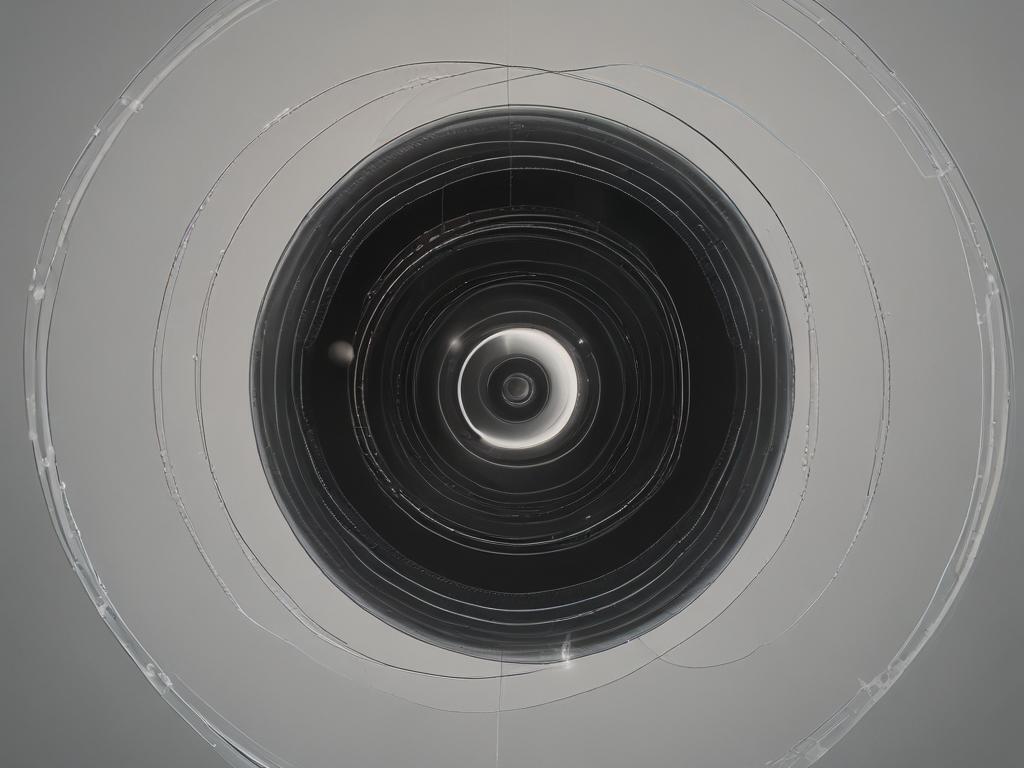
Black holes have long captivated the imagination of scientists and enthusiasts alike, serving as enigmatic cosmic entities that challenge our understanding of physics. As we delve deeper into the universe's mysteries, researchers are reimagining black holes not merely as gravitational traps but as quantum-geometric structures. This transformative perspective opens the door to groundbreaking insights about the nature of spacetime and the fundamental laws governing our universe. By exploring the concept of black holes through this lens, we can unravel the complex tapestry of their behavior and significance, enhancing our grasp of reality itself.
One of the most intriguing aspects of this new understanding lies in its implications for the age-old conundrum of information loss in black holes. Traditional views suggested that information swallowed by a black hole was lost forever, defying the principles of quantum mechanics. However, quantum-geometric models propose alternative frameworks that reconcile these conflicting ideas, potentially preserving information in ways we have yet to fully comprehend. In this blog post, we will explore the intersection of quantum mechanics and black hole physics, uncovering the remarkable possibilities that arise from viewing black holes as complex structures shaped by the very fabric of the universe. Join us as we embark on this fascinating journey to redefine our understanding of black holes and their role in the cosmos.
Understanding black holes as quantum-geometric structures
Black holes have long fascinated physicists and astronomers, serving as cosmic enigmas that challenge our understanding of the universe. Recent advancements in theoretical physics propose that black holes should be viewed not merely as colossal gravitational sinks, but as intricate quantum-geometric structures. This perspective elevates black holes from eternal darkness to vibrant geometrical constructs framed by the principles of quantum mechanics. By exploring the fabric of spacetime at their cores, researchers uncover a tapestry woven with fluctuations and curvatures that offer clues about the fundamental laws governing reality.
This quantum-geometric viewpoint emphasizes the role of information and its preservation, aligning with theories that challenge classical interpretations of black holes. Instead of viewing them simply as regions where matter and light are swallowed whole, we can think of black holes as complex entities governed by quantum entanglements and the underlying geometry of spacetime. Such a shift alters not only how we perceive black holes, but also invites deeper inquiry into their interaction with the universe. Understanding black holes in this manner could unveil hidden relationships between gravity, quantum field theory, and the very nature of information itself.
The implications of quantum-geometric models for information loss
Quantum-geometric models significantly reshape our understanding of information loss in the context of black holes. Traditionally, black holes posed a paradox known as the information loss paradox, where information that falls into a black hole seemingly vanishes from the universe. However, through a quantum-geometric lens, researchers propose that information is not lost but instead encoded on the event horizon. This idea suggests that the fabric of spacetime itself acts as a holographic storage medium, preserving the information while allowing a black hole to exist as a mathematically describable, finite entity. As scientists delve deeper into these models, they challenge the conventional wisdom about black holes, affirming that the information might remain accessible, albeit in a manner that defies classical intuition.
Moreover, understanding black holes as quantum-geometric structures opens exciting avenues for reconciling general relativity with quantum mechanics. This intersection highlights the role of quantum entanglement and its profound implications for black hole thermodynamics. Entangled particles exhibit correlations that suggest information remains intertwined, even if separated by vast distances. By embracing the idea that black holes harness a quantum-geometric nature, physicists can explore how this entanglement might preserve information despite the immense gravitational forces at play. These insights may ultimately lead to breakthroughs in theoretical physics, illuminating not just the mysteries of black holes but also the fundamental principles governing the universe.
Exploring the intersection of quantum mechanics and black hole physics
The relationship between quantum mechanics and black hole physics remains one of the most captivating challenges in modern theoretical physics. As scientists push the boundaries of our understanding, they find that black holes might serve as a unique bridge between these two realms. Quantum mechanics, which governs the behavior of particles at the smallest scales, reveals phenomena that contradict our classical intuitions, such as superposition and entanglement. When we apply these principles to black holes, we encounter puzzling questions about the nature of space, time, and information. For instance, the paradox of information loss raises significant debates: does information that falls into a black hole truly disappear forever, or can it be recovered in some form?
Recent advances in theoretical frameworks, such as the holographic principle and loop quantum gravity, offer new perspectives on how black holes interact with quantum mechanics. The holographic principle suggests that the information contained within a volume of space can be encoded on its boundary, challenging our traditional views of dimensionality and locality. Moreover, researchers explore how quantum fluctuations near the event horizon could shed light on the intricate dance between gravity and quantum states. By delving into these intersections, physicists hope to develop a holistic understanding of black holes that not only addresses fundamental questions about the universe but also enhances our grasp of quantum theory itself.